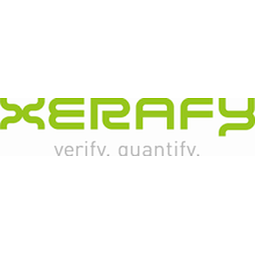Download PDF

Xerafy
Powering Industrial IoT
Overview
HQ Location
Singapore
Year Founded
2009
Company Type
Private
Revenue
$10-100m
Employees
51 - 200
Website
Twitter Handle
Company Description
Xerafy designs and manufactures the world's toughest RFID tags to power Industrial IoT applications in Manufacturing, Aerospace, Oil & Gas, Automotive, and Healthcare. A member of RAIN RFID, our technology has been distinguished by EY, Frost & Sullivan, AIconics, and Red Herring. Xerafy operates in the Americas, EMEA, and Asia Pacific regions. The Xerafy team came together to develop a breakthrough Radio Frequency Identification (RFID) design. Unlike others, it would take advantage of the metal in its surrounding, instead of being limited by it.
IoT Solutions
Asset Tracking, Identification, Counting, Analyzing, Monitoring: Businesses get the data they need to drive performance and flexibility with Xerafy's passive UHF RFID tagging and sensing solutions, available for all types of enterprise assets ranging
Key Customers
Xerafy serves clients from numerous industries ranging from manufacturing such as German firm Rittal to the energy sector such as the Centre Nucléaire de Production d’Electricité (CNPE) to even schools like Columbia University.
IoT Snapshot
Xerafy is a provider of Industrial IoT networks and connectivity, sensors, and functional applications technologies, and also active in the healthcare and hospitals, oil and gas, renewable energy, and utilities industries.
Technologies
Use Cases
Functional Areas
Industries
Technology Stack
Xerafy’s Technology Stack maps Xerafy’s participation in the networks and connectivity, sensors, and functional applications IoT Technology stack.
-
Devices Layer
-
Edge Layer
-
Cloud Layer
-
Application Layer
-
Supporting Technologies
Technological Capability:
None
Minor
Moderate
Strong
Case Studies.
Case Study
RFID Cuts Asset Tracking Time by 70 percent at Nuclear Power Plant
In the CNPE power plant there are numerous large, portable metal containers that house sensitive equipment and have to be subject to regular internal and regulatory inspections for safety and security. As a result, a facility operator has the challenging task of keeping track of the movement of these containers at all times.






